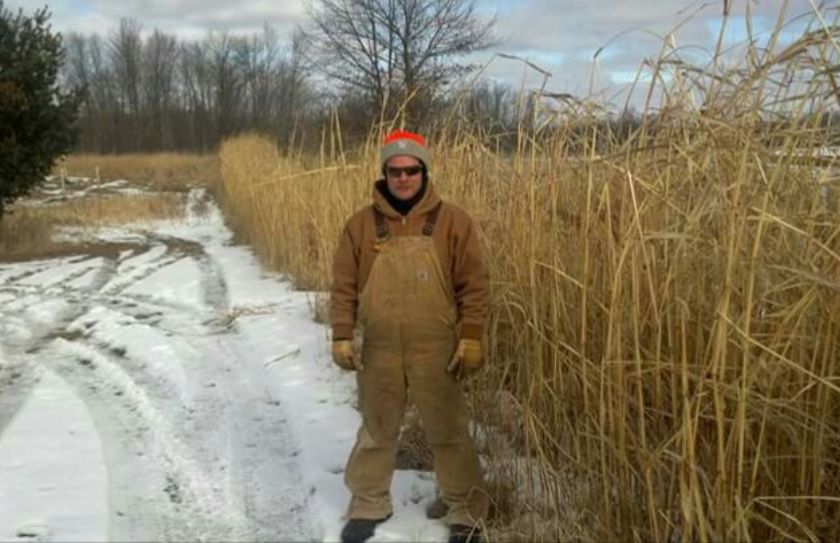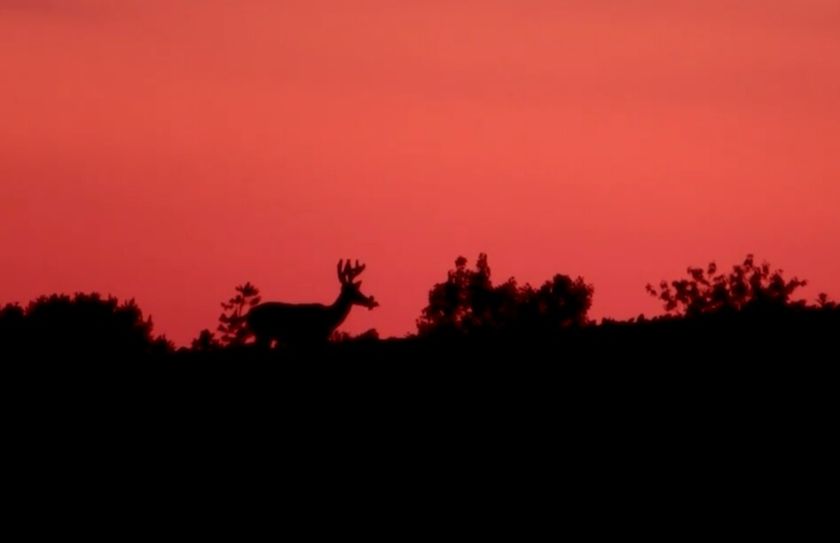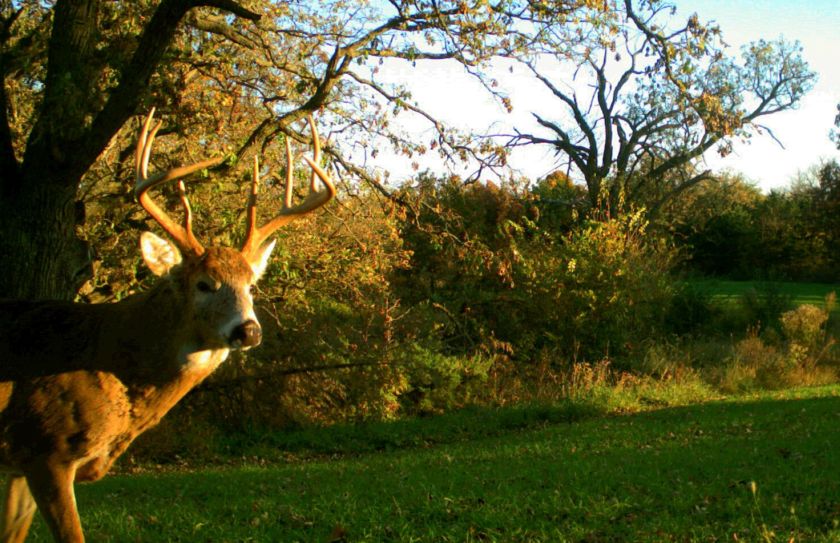Is the level of food plot attraction on your land, strategically positioned to capture mature buck movement from well past your parcel borders?
The seven year old giant was on his feet and heading East almost two hours before dark. As he left his small, secluded hardwood island to cross the adjacent decades-old beaver dam, he had one thing on his mind: Food! A mid-October cold front with 25 mph winds, driving rain, and noisy woods had pinned him down for 36 hours. His extreme need to feed was brought on primarily by two factors: a lack of high quality food sources adjacent to his daytime bedding area, and depleted energy reserves caused by rapidly falling temperatures and elevated stress levels. The massive 10 pointer was traveling over a quarter of a mile to reach his final destination - an outcome that had been in preparation for the last two years - even though the majority of his life had been safe, protected, and secure within the confines of his swamp-surrounded island hideaway.
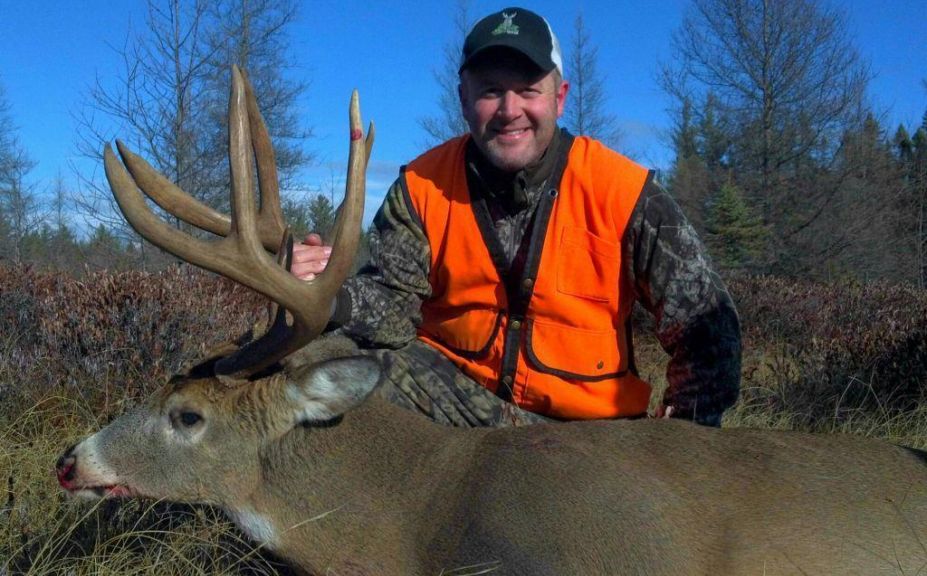
Many private deer hunting lands are near, adjacent to, or in some cases surrounded by low-pressure patches of remote deer habitat. For example, your next buck of a lifetime may be housed in a non-hunting neighbor's 10 acre parcel of idle farmland featuring early successional growth (grasses, weeds, shrubs, trees), a hard-to-access section of public land, or an adjoining large tract of improved deer cover. Cover is certainly a necessity, but when creating quality cover on your parcel is just "more of the same", addressing the needed balance of food can be a huge attraction for a mature buck that you may not otherwise have a realistic chance of killing.
When building a high-powered food plot to capture distant deer herds, several factors need to be addressed: the location of the food plot, the size of the food plot, the security of cover in traveling to the food plot, and how that food plot affects your hunting efforts. My goal is to not only tell you how to use food to encourage the movements from neighboring low-pressure whitetail habitats, but also how you can predetermine the demise of your next buck of a lifetime, even if he spends the majority of time on adjacent lands.
Location of Your Food Plot Attraction
The closer the food plot is located to the daytime bedding area of the mature buck you are hoping to attract, the harder it is to attract that buck during the daytime hours on your own land. What do I mean by that? Regardless of the % of acres of cover vs. open land, I have observed that deer relate to an overall length of movement. In agricultural regions with little cover (e.g., Northern Ohio), that length of movement may be 200 yards or less as more deer are confined to less cover. However, in big woods settings (e.g., Northern Wisconsin), that same distance between bedding and feeding locations could be a mile or more, as fewer deer experience the ultimate amount of cover. If you locate your new food plot on the border of your parcel closer to that buck's daytime security cover, he will spend much less time on your own parcel as he travels to your plot.
In contrast to locating your food plot close to a secure bedding area, locating your food plot(s) at the furthest end of your property, where you can still safely hide the plot from your own movements, is a great strategy! This allows you to promote doe family group bedding adjacent to the food source, and still leave room for bucks to travel to, and possibly even bed on, your land during daytime hours. If the end of your parcel farthest from the low-pressure side of your land features a dead-end of deer movement, then this creates an ideal situation where you can draw deer across the entire length of your parcel. A dead-end deer movement may be a neighborhood, a school, open ag land or even a major topography change, but a positive attribute of this feature is that after the deer are pulled out of heavy cover to feed adjacent to a dead-end, they are then highly likely to turn around and travel back into your own property. The longer the line of deer movement from deep cover to food source, the greater the potential for quality defined stand locations over a very long length of deer movement. Your goal should be for that mature buck to show up just before dark, after he has already traveled across the entire length of your parcel and potentially exposed himself to numerous stand positions.
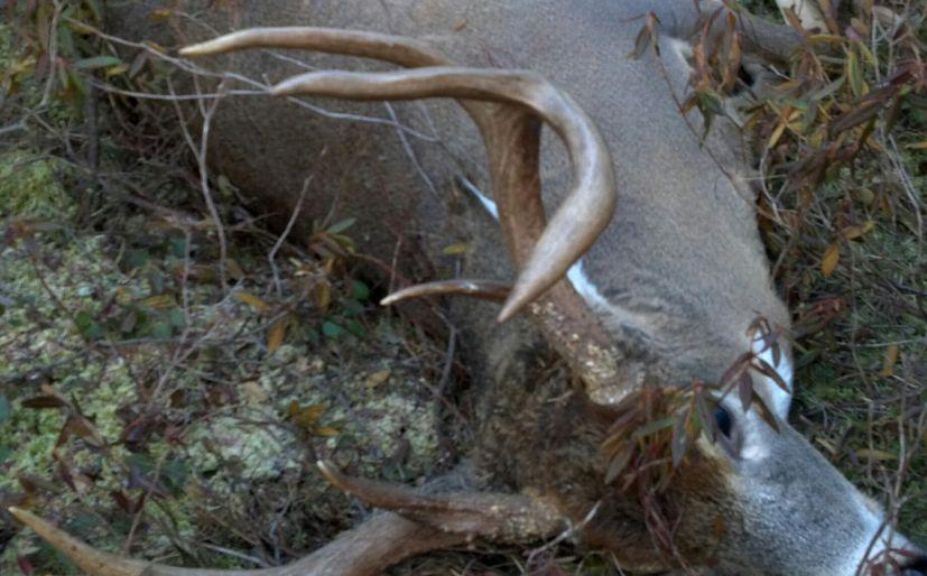
*This giant was harvested (same buck as above) in his public land bedding area, about a mile from his main destination evening food source. For more on how to hunt a mature buck's daytime hide-out, try reading"How To Hunt a Deer Bedding Area".
Size of Your Food Plot Attraction
Maybe it's too simplistic of a strategy, but to me the easy answer is that your food plot should be large enough to offer food throughout the entire period of time you intend to hunt. Great deer movements in July at the expense of November should be avoided at all costs. By maintaining the focus of the local deer herd during the peak of the hunting season, you not only have the ability to attract the most mature buck in your neighborhood, but also the opportunity to hold him, promote him to the next age class, and even possibly shoot him. When the food runs out, so does the movement, and if cover is all that you have left...expect that mature buck to find food elsewhere.
When I was a real estate appraiser years ago, borrowers were forever asking, "What do you think my house is worth?" after seeing their house for only five minutes. Of course I avoided being pinned down to a specific value. At the same time, it was a violation of my license to offer a value without the appropriate level of written support. So, I would think in terms of extremes. For example, what the house was definitely worth more than, as well as what it was definitely worth less than. Thinking of that extreme range of values from the lowest possible figure to the highest, was a fairly accurate way to reflect a possible value that consistently seemed to fall within the middle of the range. I like to take the same approach when thinking about food plot size. After taking into consideration all the variables such as neighboring food sources, deer density, and habitat quality, a half acre plot seems pretty small and an eight acre food plot is pretty large! It certainly isn't as simple as saying four acres is what you need, but it's a reasonable starting point. For example, I have found on my lease property in Southwest Wisconsin that six acres is sufficient to last through January. However, on my northern Michigan wilderness parcel - where deer density is much lower, habitat quality is lower and neighboring food sources are non-existent - eight acres of food plots is not enough. In high quality agricultural regions with a high deer population, food plot acreage often goes further because of the surrounding high quality food sources, especially when you factor in the typical higher rates of both food plot tonnage and quality. I have seen some great looking one acre December food plots with still an abundance of high quality forage left over in many Midwestern agricultural regions!
By maintaining the focus of attraction throughout the entire hunting season, you have then found your answer to how large of a food source you ultimately need. I recommend starting on the small side with room to expand. It's often easier and quicker to expand a plot into cover than to replace that cover; so, a calculated, conservative approach is often the best way to proceed.
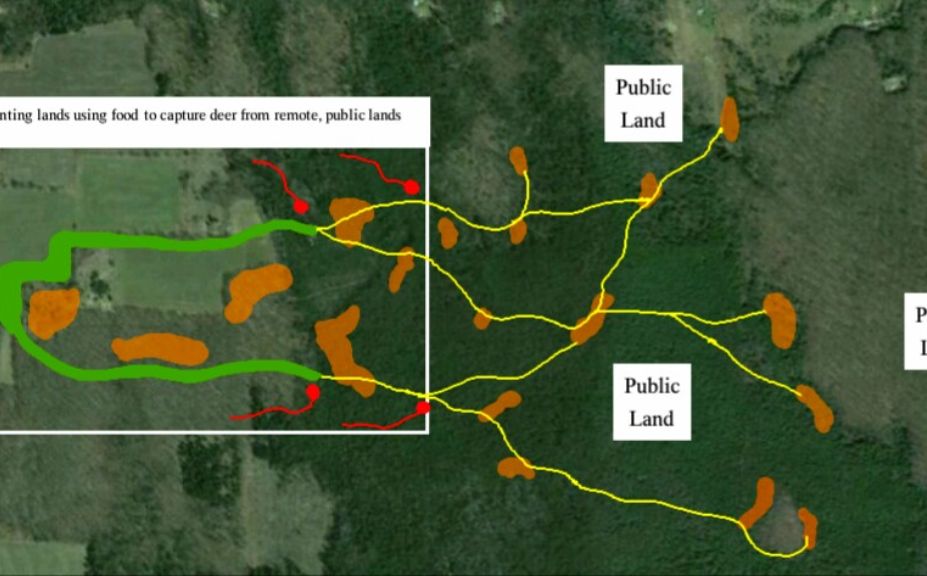
*By strategically positioning the acres of food plot attraction on your land, you can use food to attract, move and define deer movement past your stand locations. In this illustration, orange areas are either man made or natural bedding locations, yellow are deer trails and the green areas are food plots. For more on how to create high powered hunting plots, read "8 Kill Plot Strategies for Whitetails".
Secure Travel for Food Plot Attraction
There are typically two reasons why a mature buck doesn't get to your food sources until the middle of the night: 1) the local deer herd recognizes the plot as a high risk area of hunter intrusion, or 2) there is open or unsecure cover that the mature buck must travel through on the way to your food source. That second point is of huge importance. Without secure and continuous travel opportunities, a mature buck will have to rely on the cover of darkness to feel safe traveling to your food plot. Furthermore, that buck has the potential to travel in an alternative direction that offers safer passage, which will also contribute to more random, and inconsistent levels of food plot attraction.
I had a client in lower Michigan a few years ago that complained that he was getting trail camera photos of mature bucks in his food plots only during the middle of the night. The great thing about many trail camera set-ups is that they provide some clues regarding the length of time it takes a buck to travel to the plot, as well as a direction of travel. Depending on the specific habitat, capturing a mature buck on your trail camera four hours after dark may suggest that the buck traveled half a mile or more to the food plot. And the longer the distance traveled, the less frequent the visits. Upon diagnosis of the client's parcel, we learned that there was a 400 acre "QDM Property" to the South that featured high quality habitat improvements combined with low levels of hunting pressure. Any mature bucks that traveled from that parcel to my client's parcel had to do so through a quarter mile of open hardwoods, then along a quarter mile fencerow, and finally through a small patch of woods before reaching the plot. More than a half mile of open travel still equaled some great pictures, but they were mostly 4 to 6 hours after dark. And that is a scenario that has occurred repeatedly over the many states I have visited.
If the circumstances for secure travel do not exist in your situation, change them! Chain-sawed, hinge cut travel corridors through open hardwoods of 50-100' wide over a few hundred yards, with a 2-3' deer trail carved out through the middle, is just one way to tilt the odds in your favor. Native grass buffers, shrubs, and conifer plantings are also ways to hide deer on the way to and from your food plot. You may even need to shrink the size of your food plot in order to offer more surrounding cover to potentially hold and attract deer. The more defined and secure a mature buck's travel corridor is, the sooner you can expect him to filter onto a major food source before darkness sets in. The longer a mature buck travels safely throughout the season to your food source, and the more his movements are enhanced and defined, the more successfully precise your hunting efforts become as the season progresses.
Hunting Your Food Plot Attraction
"Less is More" is a common theme when hunting small parcels, and hunting the mature buck movements from an adjacent low-pressure honey hole, is no exception. In fact, reducing the security of the food or the travel corridor can shut down a mature buck's movements for weeks at a time, regardless of the ultimate level of quality or attraction. However, the opposite holds true as well. The longer the movement between bedding and food source locations takes place throughout the hunting season, the more vulnerable that mature buck becomes. The key is to conservatively chip away at the movement, while at the same time not destroying the movement to the food source.
Multiple stand locations positioned along 200 yards of movements or more, designed for various winds and time of day, can lead to a very predictable level of success. In general, hunting close to the food plot - but far enough away so that you can get into and out of the stand without spooking deer on the plot - is a great strategy for an afternoon sit. At the same time, there is often something magical about slipping well behind and away from a food source during an early morning approach to catch a monarch as he sneaks back through heavy cover to his daytime bedding location.
If your efforts remain conservative, you should expect the action to "heat up" as the season progresses. However, any careless intrusion into a mature buck's daytime bedding area around the exterior of your parcel will often tighten a buck's movements even closer to the attraction of your evening food plot destination.
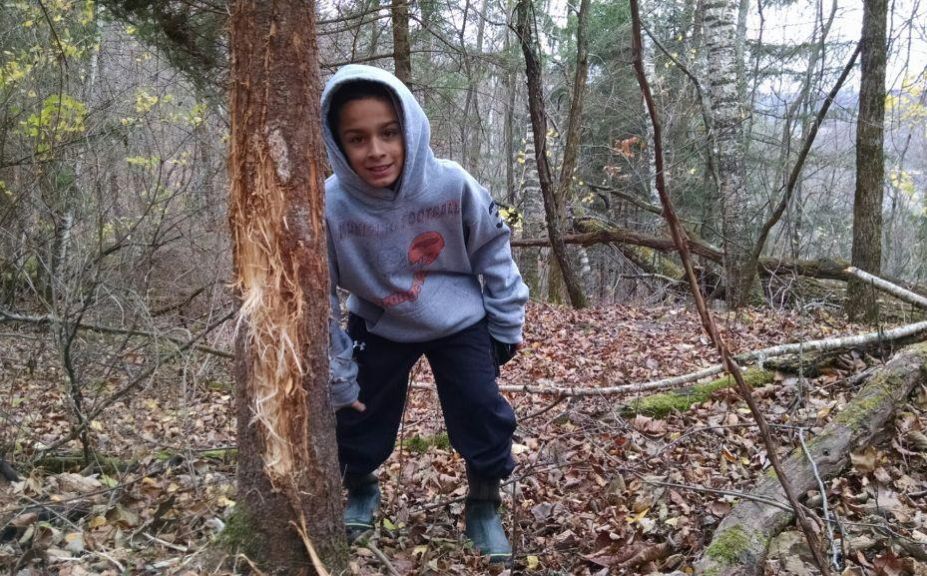
*Long lengths of food extending to edge of the secure cover of an adjacent staging area, can not only serve to attract deer across your parcel during the hours of daylight, but from food-less bedding locations a great distance away. For advanced staging area strategies, read "Recognize and Hunt a Deer Staging Area".
Conclusion
The evening of October 19, 2012 featured the backside of an outstanding "Feeding" cold front. Bucks and does were on the move and ready to feed within their preferred evening food plot attraction! The hunter took a hidden approach into a stand that was positioned 75 yards away from a 3 acre destination food source. Over 200 yards of clearcut travel corridor extended past the two acre field of native grasses on the upwind side of the stand location, and to the parcel borders almost 300 yards away. The defined and continuous secure travel created by the landowner pointed directly towards the daytime bedding hotspot of the nearby monarch, and also created one giant welcome mat of exterior deer travel onto the small parcel. The invitation and attraction was set, the movement was unspoiled by hunter movement, and it was no surprise when the hunter caught movement of ten giant antler points as they floated through the top portion of the stems of grass above the hidden body below.
Only forty yards more and the buck would filter through the staging area of early successional growth that surrounded the edge of the food plot where he expected to enter majestically as "king of the woods" and catch the last few minutes of the fading sunset. But as had been planned for and created the previous two years, the native grass field would be his "final destination". An arrow launched from less than 30 yards away facilitated the harvest of a true "ghost" of a buck, that rivaled the age and quality a buck could attain anywhere a whitetail roams.
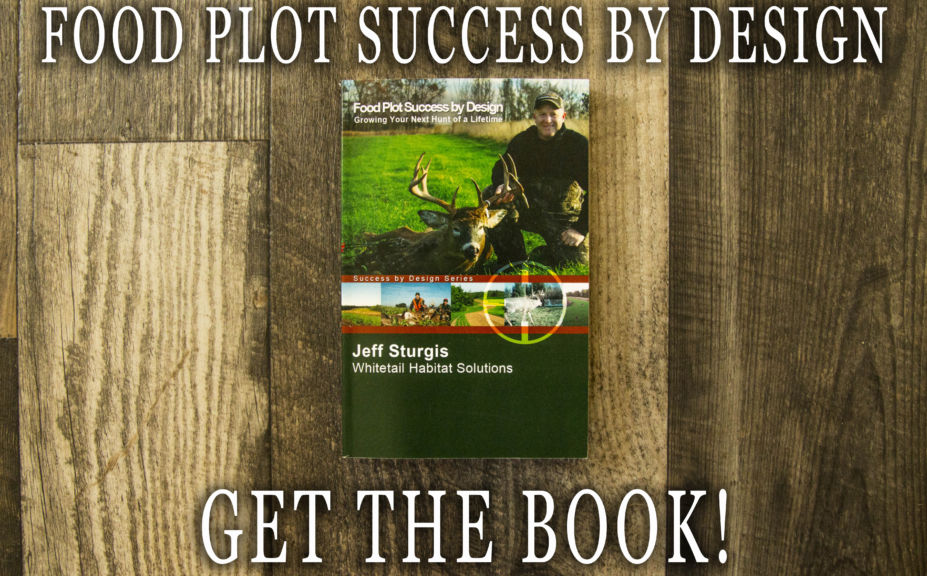
*This article is chapter 7 of my latest book,"Food Plot Success By Design", which is the most highly reviewed food plot book on Amazon! For more info and links to the reviews of any of my books, I invite to visit"Whitetail Habitat Solutions Books".
Was this a Pennsylvania monster? What about a Tennessee giant? Could this have been a Midwestern legend of the Mississippi River Valley? The answer is that it could have been any of the above locations, and many more! When your hunting strategy is matched with a high-powered food attraction source that has been properly designed in terms of size, location, and travel security, you too can experience the same level of success in capturing mature bucks from low-pressure lands surrounding your parcel
